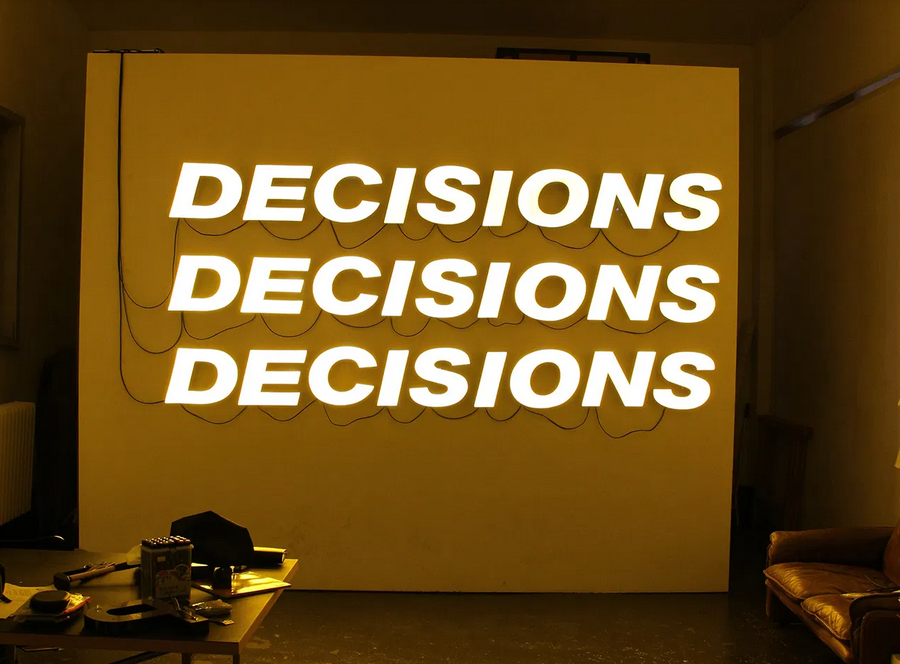
The work DECISIONS DECISIONS DECISIONS seeks out the imperfections in the logistic systems in which nowadays computers calculate nearly all necessary decisions. To do so, 27 packages were shipped out from Berlin via the logistics services provider DHL. Each package was, however, given two delivery addresses: one for Aksioma in Ljubljana and one for Drugo More in Rijeka. One address on each side of the parcel.
The resulting installation at the two exhibition spaces is formed from the letters that randomly arrive at each location, leaving the authorship of work as much to the artists as the postal machines.
Before reaching their final destinations, many of the parcels travel back and forth between different postal facilities. Depending on which side is scanned, they change directions multiple times. A TV screen in the gallery shows the recordings of the movements for each parcel, documenting the surrealist journey of the piece.
The now-empty boxes are presented in the gallery as the remaining envelope of the work and skeletons of the process.
The work experiments with forcing a decision-making process on the postal system which does not usually decide – only routes. The work reinterprets The Postman’s Choice by Ben Vautier from the year 1965 in which a postal worker decides where a postcard that has two delivery addresses is finally to be sent. As it was back then, the standard rule in digital shipping operations is that for every shipping unit there must be one sender and one clear recipient. In today’s fully automated logistics systems, it is no longer the postman’s choice, but rather a question of which side of a parcel is “up” for the automated scanning process to read. The logistics system works mechanically by means of barcodes, scanners and programmed directives. Until the human supervisor spots and corrects the anomaly of the undecided recipient.
